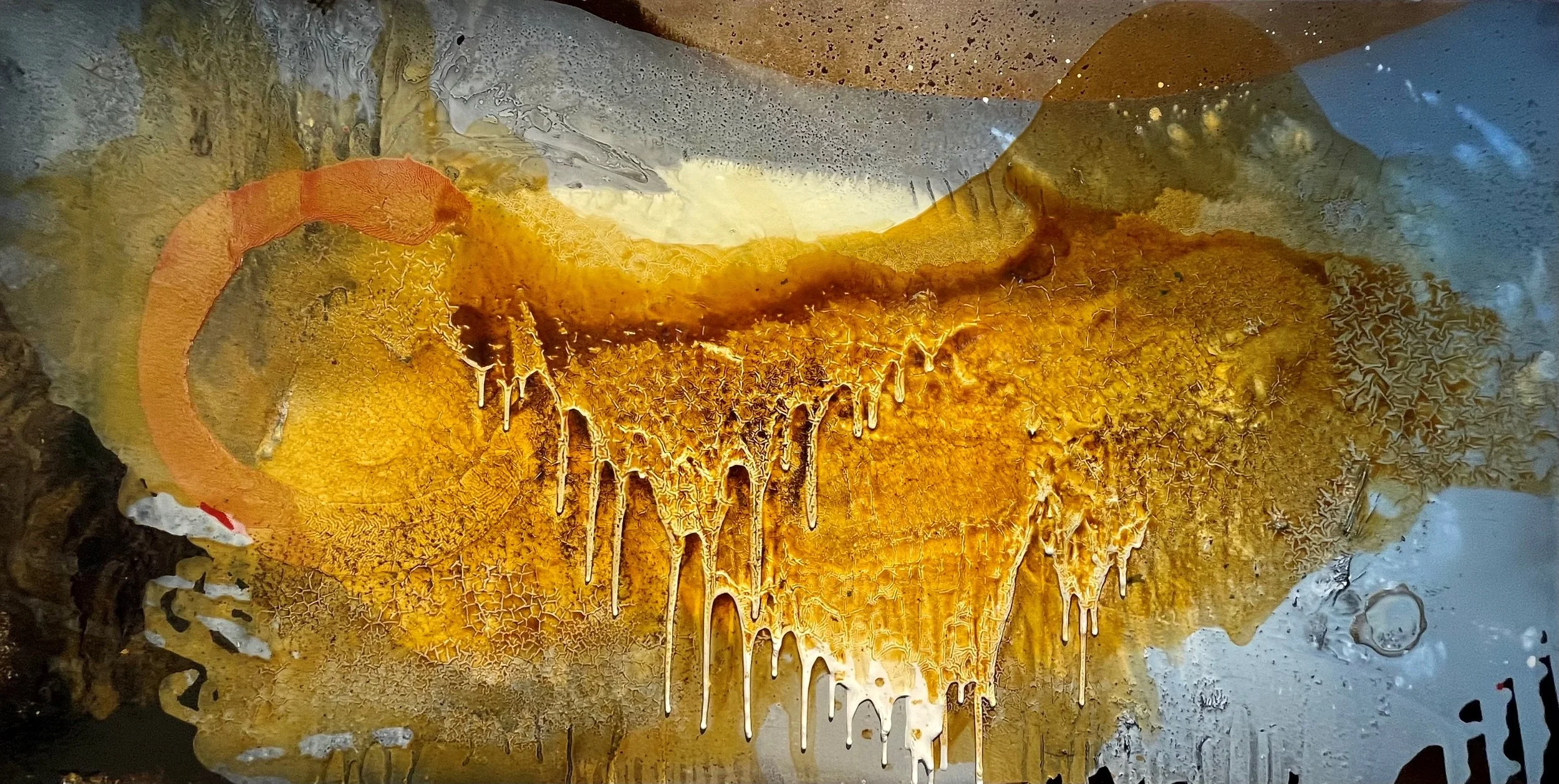“I invite the viewer to enter the painting through the portal of the circle and journey inward — to discover personal meanings that emerge through abstraction, process, and feeling. This is the transcendent power of the work: the meeting of visual terrain, abstract thought, and the universal, positive force of the circle, offering each viewer a uniquely personal experience.”
Caroline Christie-Coxon’s process-driven paintings are ongoing iterations of her Fluid Loop motif — an evolving visual language of movement, circularity, and organic potential. Each work arises from the dynamic interaction between artist, medium, and elemental forces, embodying a philosophy that embraces openness, transformation, and the possibility of infinite outcomes.
At the heart of Christie-Coxon’s practice is a paradigm shift away from Cartesian dualism toward a fluid, organic ontology — one that reflects the interwoven rhythms of nature and human experience. Circularity, inherent to the human condition, becomes both method and symbol. Through repeated fluid gestures, her loops evoke concepts of unity, duality, oneness, and eternal return, offering an ode to materiality and process.
These imperfect circles — endlessly variable and evolving — are deliberate gestures ultimately shaped and resolved by natural forces. The artist’s practice becomes a space where structure meets liberation, where intention yields to alchemical revelation. Here, no two forms are alike; each painting loops back upon itself, informing and transforming its own meaning over time.
Christie-Coxon’s Fluid Loop can be seen as a contemporary hybrid of ancient symbols such as the ouroboros and the Zen enso — timeless icons now resonating within the urgent global context of circularity, interconnection, and inclusivity.
In collaborating with paint as a living, reactive medium, Christie-Coxon positions herself as facilitator rather than controller, “encouraging the paint to express itself.” Pigment becomes elemental — flowing, merging, resisting — and the work emerges as a visual record of the encounter between gesture, process, and matter. Far from concealing the act of making, her paintings foreground it, inviting viewers into the intimate, unfolding dialogue between artist, medium, and the natural world.
Caroline Christie-Coxon Mystic Spill, 2024. Synthetic Polymer on canvas, 150 x 150cm.
Caroline Christie-Coxon Whisper Of Creation, 2024. Synthetic Polymer on canvas, 120 x 120cm.
Caroline Christie-Coxon Evolve, 2022 Synthetic polymer on Belgian Linen 120 x 120cm
Caroline Christie-Coxon Unfolding, 2024. Synthetic Polymer on canvas, 150 x 150cm.
Caroline Christie-Coxon Curvature As Geometry, 2024 Synthetic polymer on canvas 120cm x120cm
Caroline Christie-Coxon Enso, 2022 Synthetic polymer on Belgian Linen 150 x 150cm
Caroline Christie-Coxon Yin and Yang, 2022 Synthetic Polymer on Belgian Linen 150 x 150 cm
Caroline Christie-Coxon Revolution, 2021. Acrylic and Ink on Canvas 100 x 100 cm
Caroline Christie-Coxon We Are Living On The Circumfrence Of A Circle, 2021. Acrylic on Canvas 80 x 160 cm
Caroline Christie-Coxon Evolution, 2021. Acrylic on canvas 120 x 120 cm
Caroline Christie-Coxon The Colours Of Coincidence, 2024 Acrylic and inks on canvas 240 x 150cm
Caroline Christie-Coxon Lake Ballard, 2024 Synthetic polymer on canvas 120 x 120cm
Caroline Christie-Coxon Fossil Ring, 2024 Acrylic and ink on canvas 137 x 100cm
Caroline Christie-Coxon Intimately Linked To Emergent Space, 2024 Synthetic polymer on canvas 120 x 120cm
Caroline Christie-Coxon Us The Aether, 2024 Synthetic polymer on canvas 120cm x 120cm
Caroline Christie-Coxon The Void_Synthetic polymer on canvas, 2022 100 x 100cm
Caroline Christie-Coxon Primordial Pulse, 2024 Synthetic polymer on canvas 150 x 150cm
Caroline Christie-CoxonResolution By Liberation, 2024 Synthetic polymer on canvas 150 x 150cm
Caroline Christie-Coxon Circuit, 2021 Acrylic and inks on canvas 150 x 150cm
Caroline Christie-Coxon Universal Cycle, 2022 Synthetic polymer on canvas 150x150cm
Caroline Christie-Coxon Polygon Loop, 2022 Synthetic polymer on canvas 100 x 100cm
Caroline Christie-Coxon Circular Continuum, 2024 Oxidised metal pigment and synthetic polymer on Belgian Linen 120 x 120cm
Caroline Christie-Coxon Earths Mantle, 2024 Oxidised metal pigment and synthetic polymer on Belgian Linen 120 x 120cm
Caroline Christie-Coxon You The Universe, A Natural Oxymoron, 2021 Oil on canvas 170 x 220cm
Caroline Christie-Coxon Deep Time Perspective, 2024 Oil on canvas 150 x 150 cm
Caroline Christie-Coxon Without A Net, 2024 Oil on canvas 120 x 120 cm
Opposites, 2006. Acrylic and Ink on Canvas, 130 x 130 cm
Caroline Christie-Coxon Spinnism, 2022 Synthetic polymer on canvas 100 x 100cm
Caroline Christie-Coxon Halo,2021 Acrylic on canvas 150 x 150cm
Caroline Christie-Coxon Gravity, 2021 Synthetic polymer on canvas 120 x 120cm
Caroline Christie-Coxon Circish, 2024 Synthetic polymer on Belgian Linen 120 x 120cm
Caroline Christie-Coxon Blissfully Exhausted And Suspended, 2005 Mixed media on canvas 150 x 150cm
Caroline Christie-Coxon They Talk (The Peacemaker and the confidant), 2005 Mixed media on canvas 170 x 170 cm
Caroline Christie-Coxon Softly Spoken, 2005 Mixed Media on canvas 150 x 150cm
Caroline Christie-Coxon Ambient Edges, 2005 Mixed media on canvas 110 x 110cm
Caroline Christie-Coxon To Make An Unforgettable Friend, 2006 Oil on canvas 110 x 110cm
Caroline Christie-Coxon A Lifetime Ago, 2006 Mixed media on canvas 130 x 130cm
Caroline Christie-Coxon Temperament Is A Circle, 2024 Acrylic and ink on canvas 150 x 150cm
Caroline Christie-Coxon In the Spaces Between, 2006 Mixed Media on Canvas 110 x 110 cm
Caroline Christie-Coxon Drifting The Crowd, 2005 Oil on canvas 130 x 130cm
Caroline Christie-Coxon To Reteach a Thing Its Loveliness, 2006 Oil on Canvas 100 x 100 cm
Caroline Christie-Coxon Gestures in Passing, 2005 Mixed Media on Canvas 100 x 100 cm
Caroline Christie-Coxon The Light of Discovery, 2007 Oil on Canvas 200 x 130 cm
Caroline Christie-Coxon Come With Me, 2005 Mixed media on canvas 120 x 120cm
Caroline Christie-Coxon Contemplation Allowed, 2008 Oil on canvas 80 x 180cm
Caroline Christie-Coxon Journey, 2005 Acrylic on canvas 130 x 130cm
Caroline Christie-Coxon New Direction Are Given, 2005 Mixed media on canvas 150 x 180cm
Caroline Christie-Coxon One, 2021 Oil on canvas 150 x 100cm
Caroline Christie-Coxon Phases, 2005 Acrylic on canvas 90 x 70cm
Caroline Christie-Coxon More Easily Lead, 2005 Oil on canvas 120 x 120cm
Caroline Christie-Coxon I Invite, 2006 Mixed media on canvas 160 x 160cm
Caroline Christie-Coxon When You Say Nothing You Say Everything, 2008 Oil on canvas 50 x 180cm
Caroline Christie-Coxon Thoughts Are The Forerunners, 2005 Mixed media on canvas 100 x 180cm
Caroline Christie-Coxon Time In The Shade, 2007 Oil on canvas 80 x 180cm
Caroline Christie-Coxon Serenade, 2005 Mixed media on canvas 120 x 120cm
Caroline Christie-Coxon Mind Games (Diptych), 2006 Acrylic on canvas 120 x 120cm
Caroline Christie-Coxon New Infatuations, 2005 Acrylic on Canvas 130cm x 130cm
Caroline Christie-Coxon Full Fascinating Bloom, 2007 Mixed Media on Canvas 100 x 100 cm
Caroline Christie-Coxon The Romance of Scent, 2006 Mixed Media on Canvas 120 x 90 cm
Caroline Christie-Coxon Closer for longer, 2006 Acrylic on canvas 110cm x 110cm
Caroline Christie-Coxon Beyond Even the Abstract, 2007 Oil on canvas 130 x 200cm
Caroline Christie-Coxon But Life Is Fluid And Cannot Be Contained (Triptych), 2009 Mixed media on canvas
Caroline Christie-Coxon Circles On Red, 2005 Oil on canvas 130 x 130cm
Caroline Christie-Coxon Where You’re From, 2006 Mixed Media on canvas 130 x 130cm
Caroline Christie-Coxon Single Thought, 2005 Mixed media on canvas 130 x 130cm
Caroline Christie-Coxon The beginning, 2000 Mixed media on canvas 130 x 130cm
Caroline Christie-Coxon Reciprocal Fantasies 1 [diptych], 2005 Mixed media on canvas
Caroline Christie-Coxon Take me with you, 2006 Acrylic on canvas 110 x 110cm
Caroline Christie-Coxon Unique Observations, 2006 Mixed Media on Canvas 130 x 130cm
Caroline Christie-Coxon Vermillion Stained Decision, 2005 Mixed media on canvas 150 x 150cm
Caroline Christie-Coxon Walk in the Park, 2006 Mixed media on canvas 120 x 90cm
Caroline Christie-Coxon Undercurrent. 2006 Mixed media on canvas 130 x 130cm
Caroline Christie-Coxon Circles 1. 2003 Mixed media on canvas 130 x 130cm
Caroline Christie-Coxon Circles 6. 2003-2004 Mixed media on canvas 150 x 150cm
Caroline Christie-Coxon Squared Circle White, 2002 Mixed media on canvas 80 x 80cm
Caroline Christie-Coxon To try to know (diptych) 2006 Mixed media on canvas 100 x 100cm
Caroline Christie-Coxon Underwater love 4. 2006 Oil on canvas 45 x 45cm
Caroline Christie-Coxon Underwater wait. 2006 Oil on canvas 45 x 45cm
Caroline Christie-Coxon Reset The Surroundings, 2009 Mixed media on canvas 130 x 200cm
Caroline Christie-Coxon Squared Circle black, 2004 Oil on canvas 110 x 100cm
Caroline Christie-Coxon In The Company Of Strangers, 2005 Mixed Media On Canvas 150 x 150cm
Caroline Christie-Coxon Flexing For Success, 2010 Oil on canvas 80 x 160cm
Caroline Christie-Coxon Delicious Envy, 2005 Oil on canvas 80 x 80cm
Caroline Christie-Coxon Hidden patterns 1, 2019 Oil on canvas 100 x 100cm
Caroline Christie-Coxon Use you cadence ladder, 2006 Oil, rust, verdigris on canvas 60 x 200cm
“I am drawn to the age-old medium of paint; working with paint can be primal, visceral, intimate, and filled with potential for expression and observation”









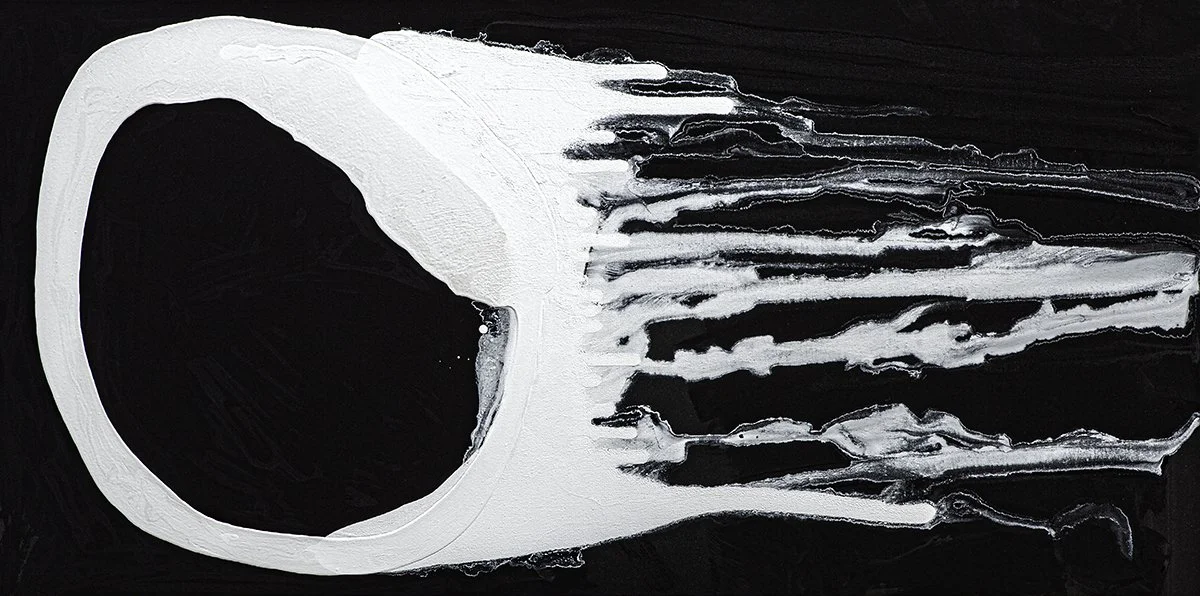











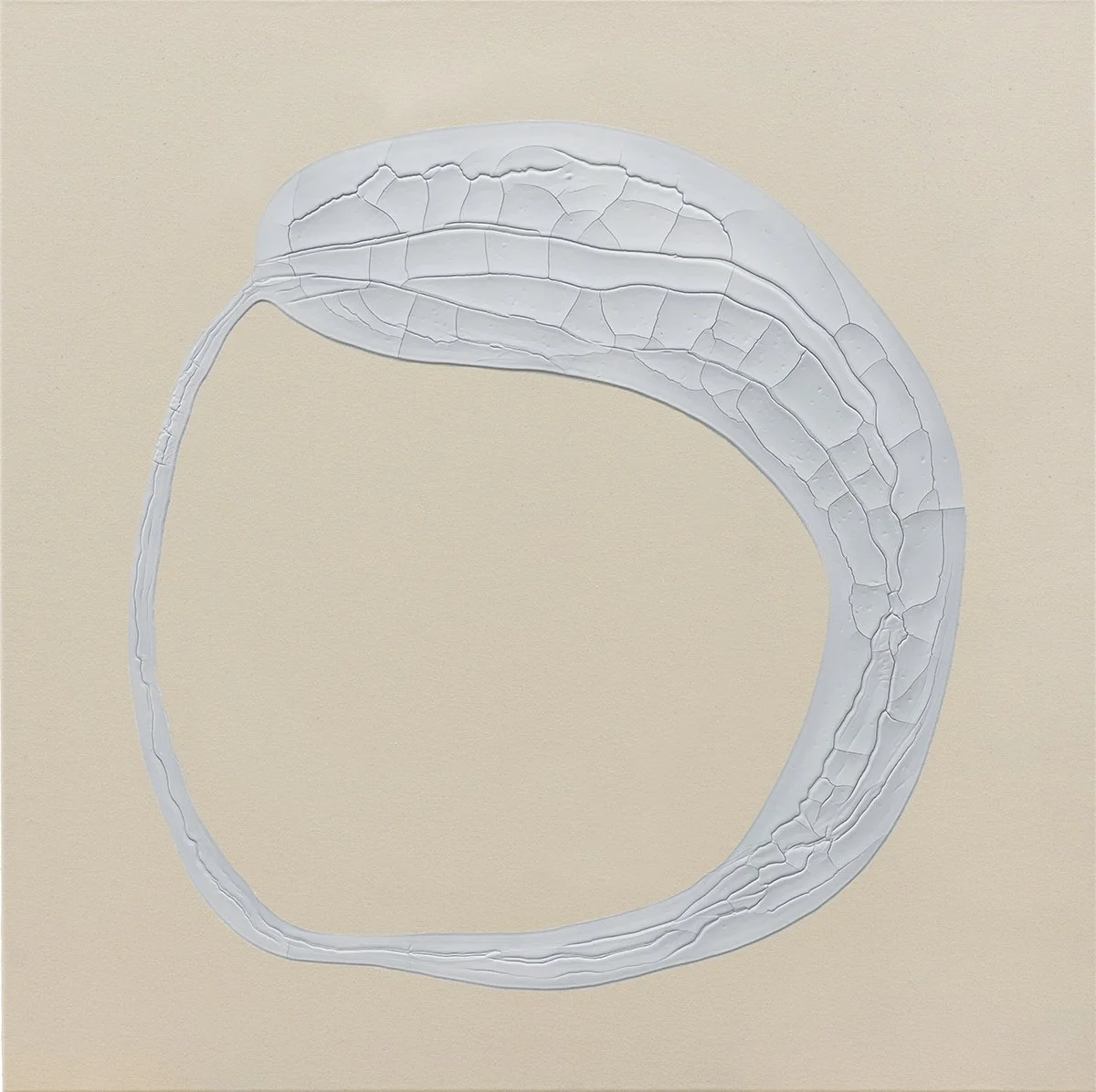





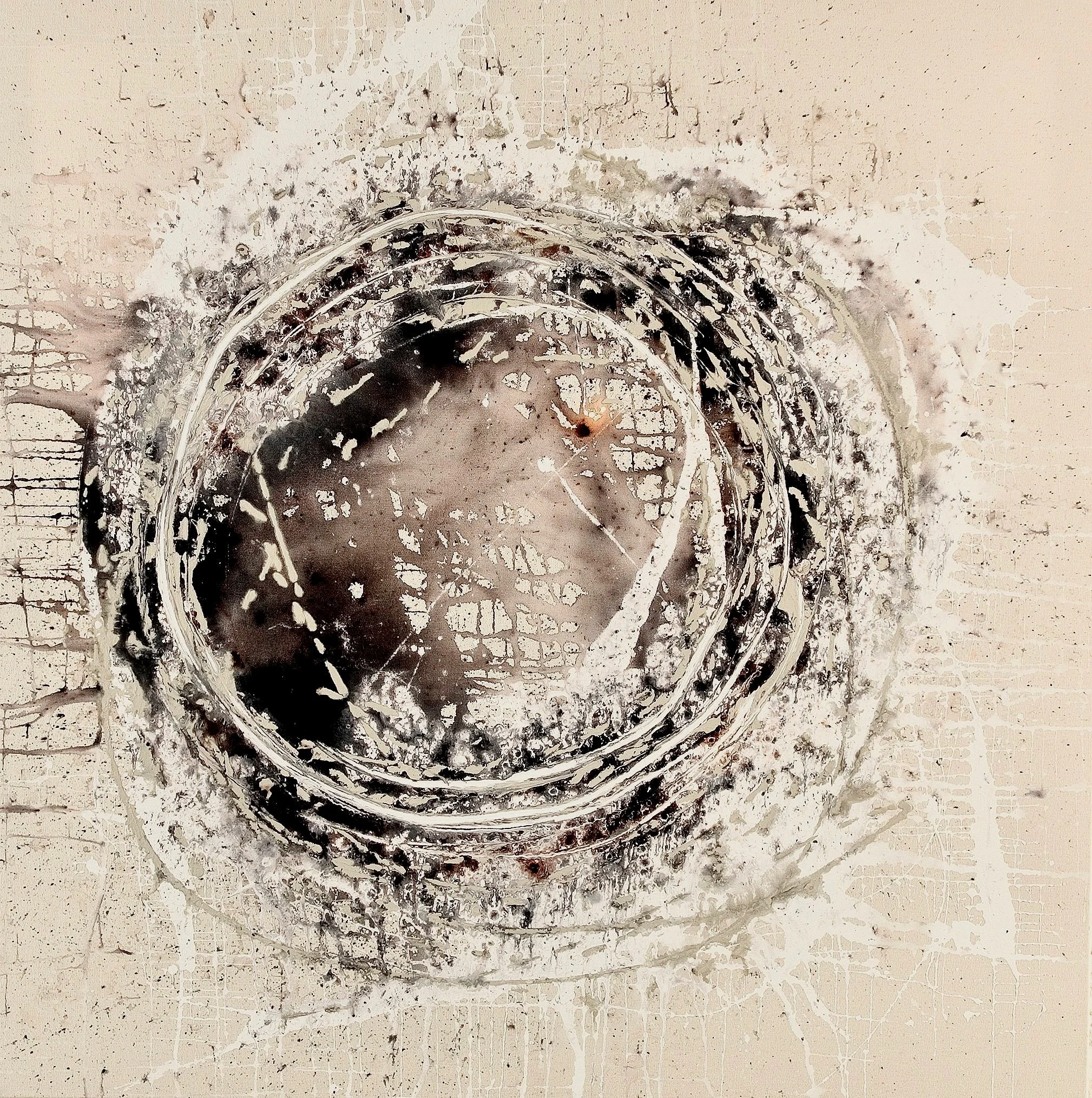











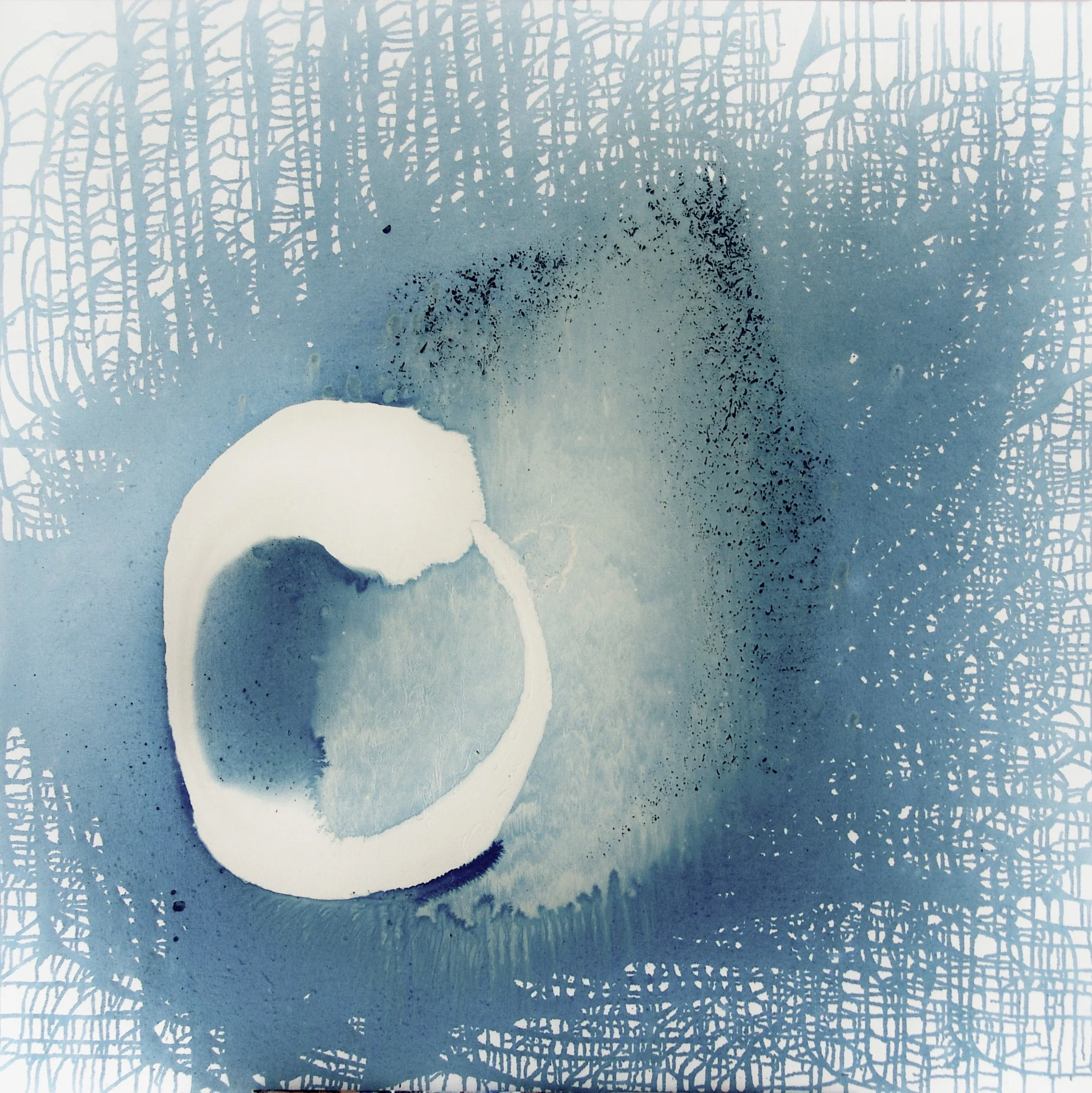
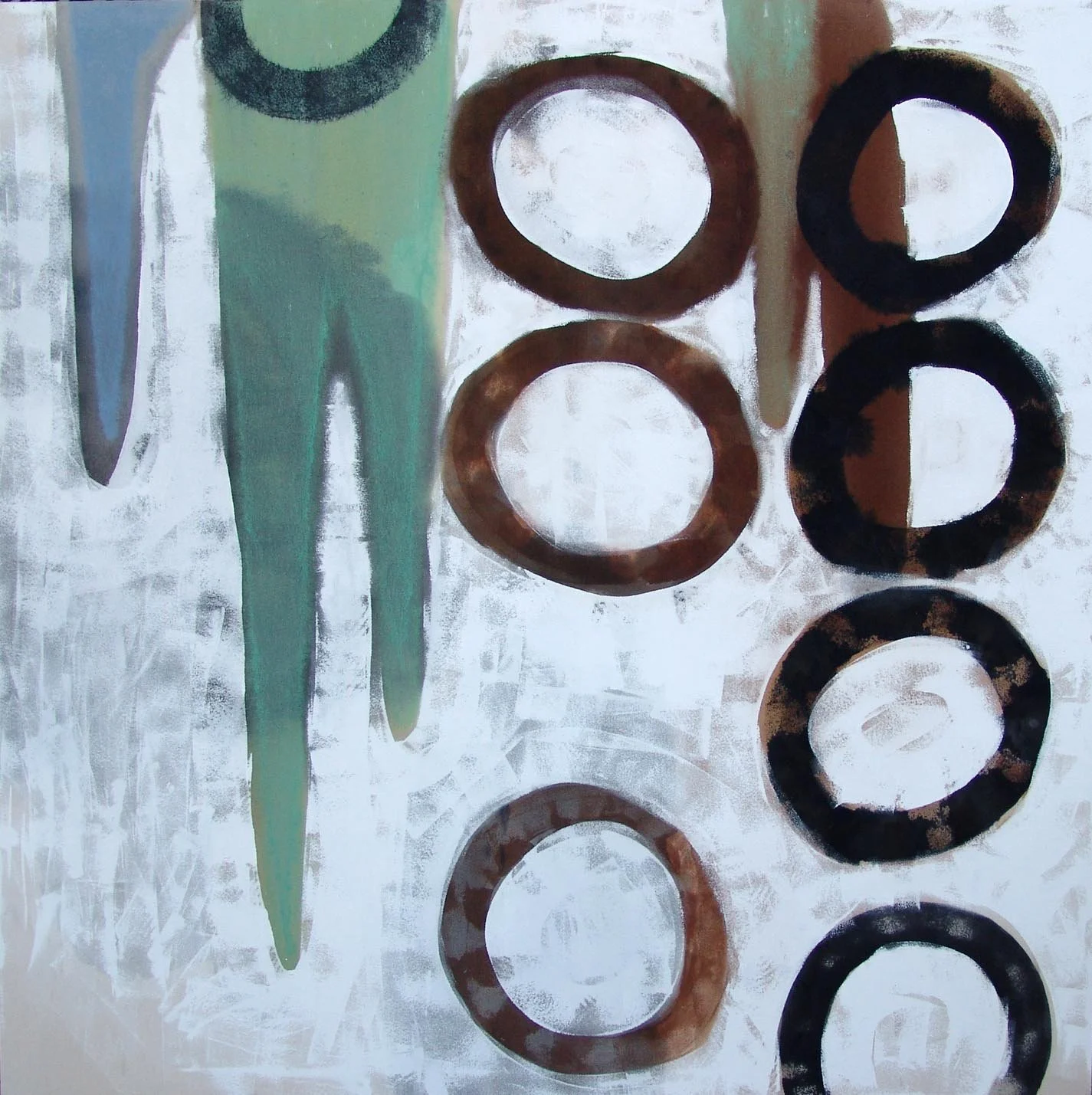













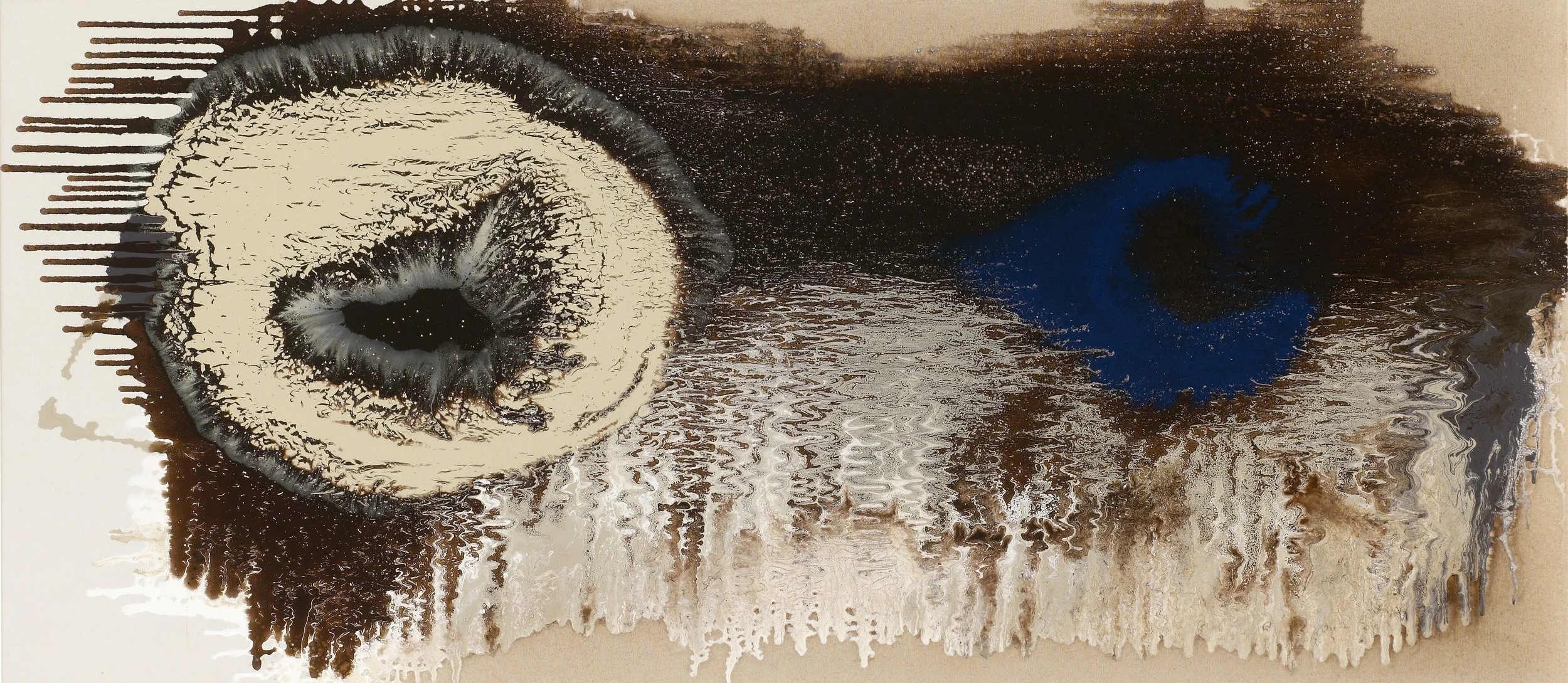








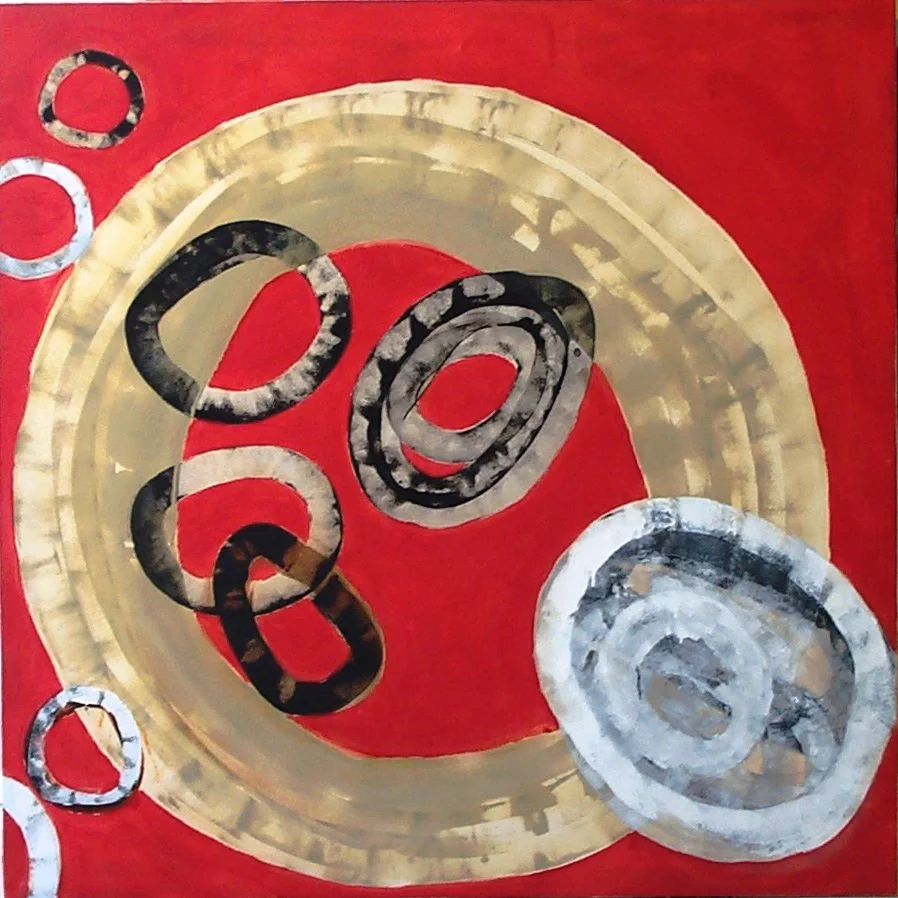


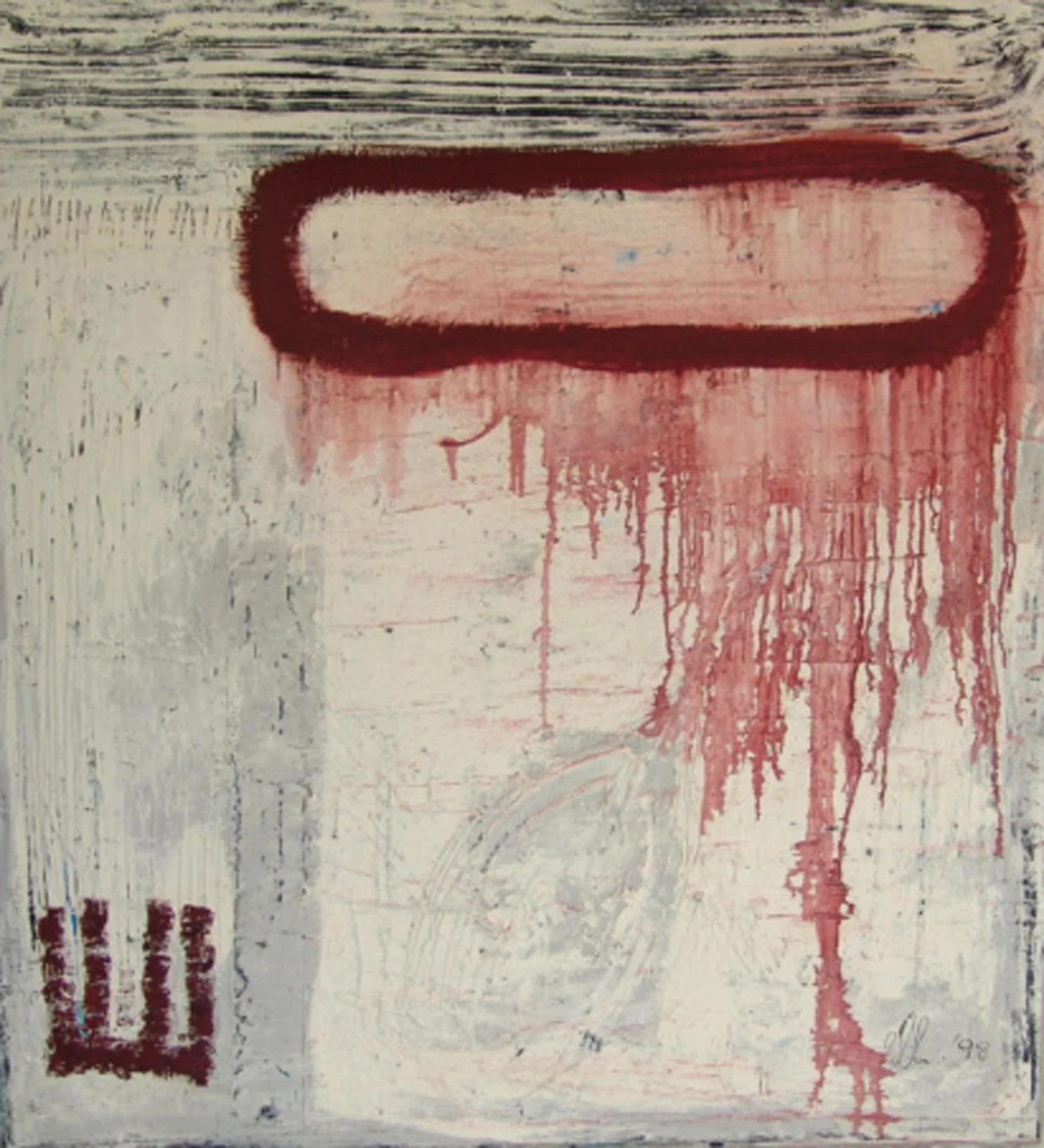
![Caroline Christie-Coxon
Reciprocal Fantasies 1 [diptych], 2005
Mixed media on canvas](https://images.squarespace-cdn.com/content/v1/643770d68df658408bf7eed8/b18a350e-88bb-40fb-88b6-e55761c4a199/Reciprocal+Fantasies+1+%5Bdiptych%5D+.+500+x+500.+Mixed+media+on+canvas+%28High+Res%29+%281%29.jpg)














